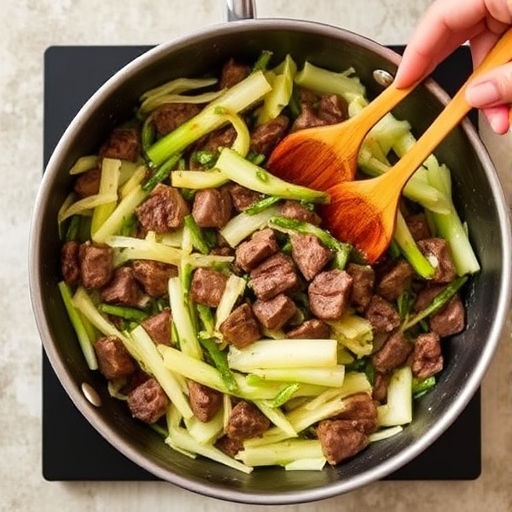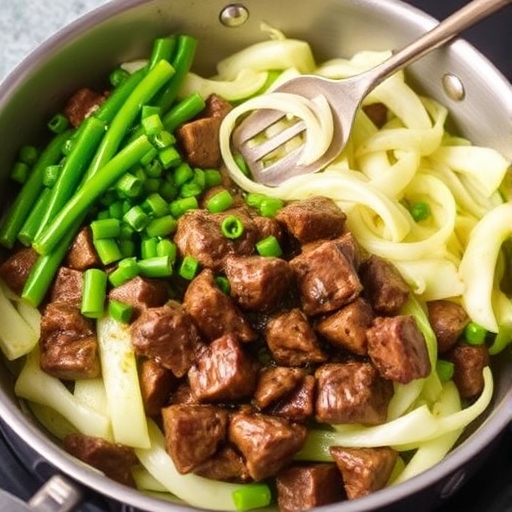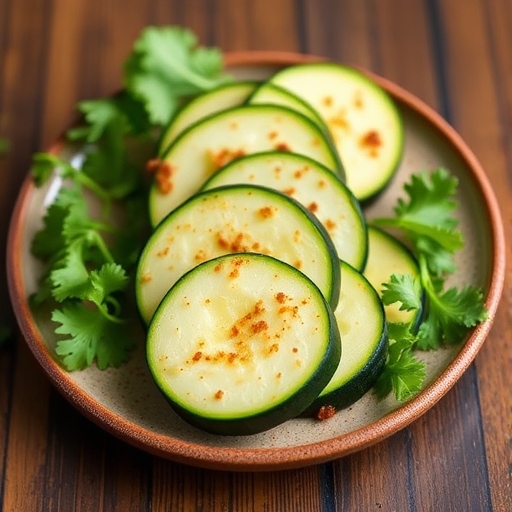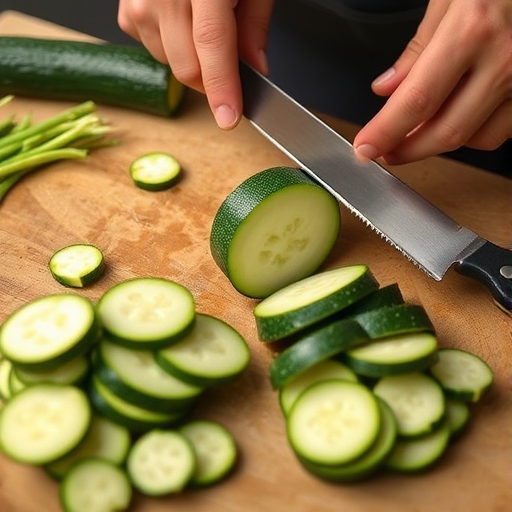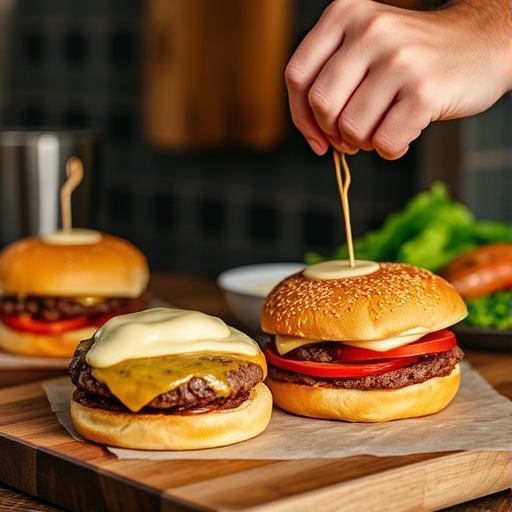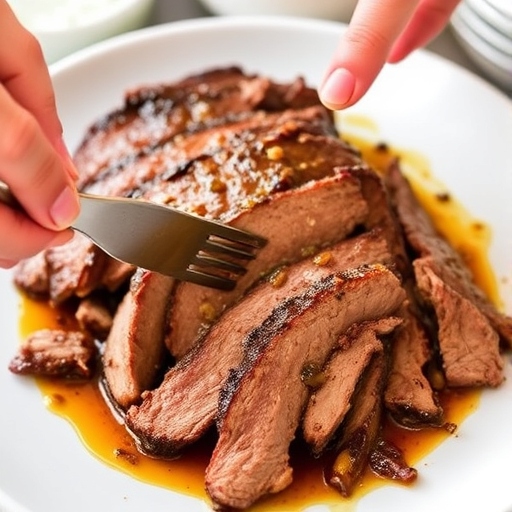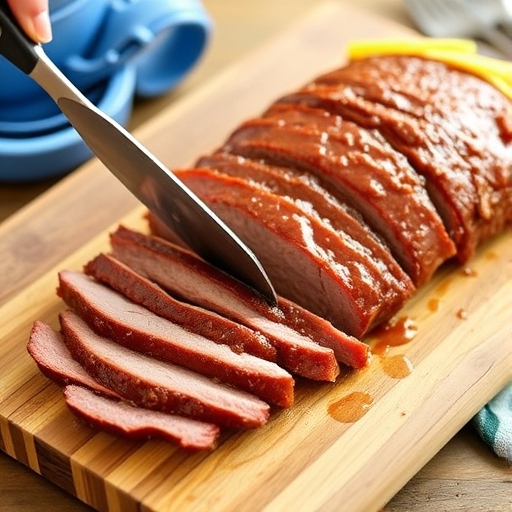1. Introduction
Blackened Tuna Steaks with Mango Salsa is a vibrant, flavorful dish that blends the richness of seared tuna with the sweet, zesty kick of fresh mango salsa. This recipe is perfect for those who appreciate bold flavors and a fresh twist on a classic seafood dish. Whether you’re grilling on a warm summer evening or preparing a light, satisfying meal, this dish delivers a punch of flavor and a visually stunning plate.
2. The Story Behind Blackened Tuna Steaks with Mango Salsa
The “blackening” technique, originally popularized by Chef Paul Prudhomme in the 1980s, involves seasoning fish or meat with a mix of spices and then searing it in a hot pan to form a flavorful, crispy crust. Paired with a tangy, tropical mango salsa, this recipe marries the deep, smoky flavors of the blackened tuna with the bright, refreshing taste of the salsa. It’s a fusion of Southern Cajun cooking and tropical flavors that creates an unforgettable dish.
3. The Benefits of Making Your Own Blackened Tuna Steaks with Mango Salsa
Making this dish at home gives you full control over the seasoning and freshness of the ingredients. By preparing the salsa from scratch, you can adjust the sweetness and heat levels to your preference, while ensuring that the tuna remains tender and flavorful. The homemade approach also means no preservatives or hidden sugars, just pure, delicious, and healthy ingredients.
- Tuna: High in lean protein, omega-3 fatty acids, and vitamin D, tuna is a heart-healthy choice.
- Mango Salsa: Packed with vitamins A and C, mangoes boost immunity, improve skin health, and aid digestion.
4. Essential Ingredients for the Perfect Blackened Tuna Steaks with Mango Salsa
For the Tuna Steaks:
- 4 fresh tuna steaks (about 6 oz each)
- 2 tablespoons olive oil (for searing)
- 2 teaspoons paprika
- 1 teaspoon cayenne pepper
- 1 teaspoon garlic powder
- 1 teaspoon onion powder
- 1/2 teaspoon thyme
- 1/2 teaspoon oregano
- Salt and pepper to taste
For the Mango Salsa:
- 1 ripe mango, peeled and diced
- 1/2 red bell pepper, finely chopped
- 1/4 red onion, finely chopped
- 1 small jalapeño, seeds removed and finely chopped (optional for heat)
- 1 tablespoon fresh cilantro, chopped
- Juice of 1 lime
- Salt and pepper to taste
5. Cultural History of Ingredients
- Tuna: Widely enjoyed around the world, tuna has been a staple of various cuisines, from Japanese sushi to Mediterranean seafood dishes. It’s a symbol of rich, healthy eating, with cultures around the globe appreciating its versatility and nutritional benefits.
- Mango: Often referred to as the “king of fruits,” mangoes are native to South Asia but have become a staple in tropical and subtropical regions around the world. They are a vital ingredient in many tropical salsas and chutneys, offering a perfect balance of sweetness and tartness.
6. Equipment You’ll Need
- Cast iron skillet or heavy pan: Ideal for creating a blackened crust on the tuna steaks.
- Knife and cutting board: For chopping the mango, bell pepper, onion, and other salsa ingredients.
- Small bowl: For mixing the seasoning for the tuna steaks.
- Lime squeezer: To easily extract lime juice for the salsa.
7. Step-by-Step Instructions for Blackened Tuna Steaks with Mango Salsa
Step 1: Prepare the Mango Salsa
- Start by preparing the salsa. In a medium-sized bowl, combine the diced mango, chopped red bell pepper, red onion, jalapeño (if using), and cilantro.
- Squeeze the lime juice over the mixture and stir to combine.
- Season the salsa with salt and pepper to taste. Set aside to allow the flavors to meld.
Step 2: Prepare the Blackened Tuna Steaks
- In a small bowl, mix together the paprika, cayenne pepper, garlic powder, onion powder, thyme, oregano, salt, and pepper.
- Pat the tuna steaks dry with paper towels and rub the spice mixture evenly on both sides of each steak.
- Heat a cast-iron skillet or heavy pan over medium-high heat and add olive oil. Once the oil is shimmering, place the tuna steaks in the skillet.
- Sear the tuna steaks for 2-3 minutes on each side, or until a crispy blackened crust forms. The tuna should still be rare in the center, as overcooking will result in a dry steak.
- Remove the tuna steaks from the skillet and let them rest for a couple of minutes before serving.
Step 3: Serve
- Place the tuna steaks on plates and top each with a generous spoonful of mango salsa.
- Serve immediately, perhaps alongside a fresh salad or roasted vegetables.

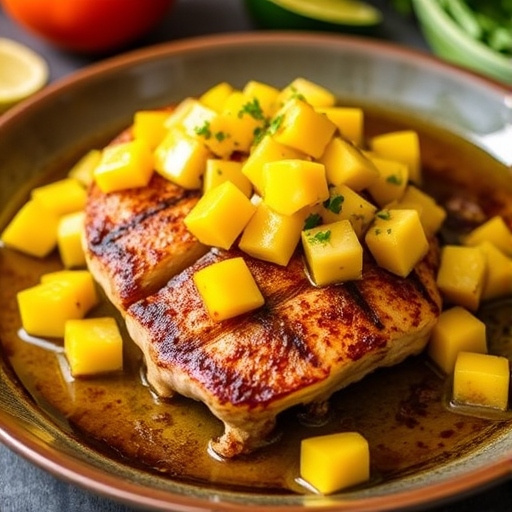
8. Suggestions for Serving and Storing
- Serving: This dish pairs well with a simple side of sautéed greens, quinoa, or a light salad. You can also serve it with a chilled glass of white wine or a crisp, cold beer.
- Storing: If you have leftovers, store the tuna steaks and salsa separately in airtight containers in the refrigerator for up to 2 days. The salsa will keep its freshness, but the tuna may lose its crispness. Reheat the tuna briefly in a pan to maintain its flavor.
9. Chef Simon’s Tips for Blackened Tuna Steaks with Mango Salsa
- Don’t Overcook the Tuna: Tuna is best served rare to medium-rare, so keep a close eye on the cooking time. Searing it for too long will result in a tough, dry steak.
- Adjust the Spice Level: If you prefer a milder flavor, reduce the amount of cayenne pepper in the blackening seasoning, or omit the jalapeño from the salsa.
10. Emotional and Psychological Impact of Food
Food is often more than just sustenance; it’s a way to connect with others and celebrate experiences. The combination of the bold blackened tuna and refreshing mango salsa invokes feelings of excitement and satisfaction. The tropical sweetness of mango reminds us of warm, sunny days, while the savory tuna brings a sense of grounding comfort. Enjoying this dish can be a reminder to savor life’s simple pleasures and nourish both body and soul.
11. Mindful Cooking Techniques
- Focus on Freshness: When preparing the salsa, try to use the freshest ingredients possible. Ripe mangoes will add sweetness and depth to the dish, while freshly squeezed lime juice enhances the overall flavor.
- Pay Attention to Heat: When blackening the tuna, keep an eye on the heat of the pan. Too hot, and you risk burning the seasoning; too cool, and you won’t get that signature crispy crust.
12. Tips for Keeping the Recipe Fresh Longer
To keep the leftover tuna fresh, store it in an airtight container in the refrigerator. Since the salsa is made with fresh ingredients, it’s best consumed within 1-2 days to retain its vibrant flavor. For the best results, do not freeze the salsa as it may lose its texture.
13. Advanced Culinary Terms and Techniques
- Blackening: This is a cooking technique where a protein, such as fish or chicken, is coated with a mixture of spices and then cooked in a very hot pan, creating a dark, crispy crust while sealing in the juices.
- Searing: The process of cooking meat at high heat to form a caramelized crust while keeping the inside tender and juicy.
14. Healthy Ingredient Alternatives
- Tuna: If you’re looking for an alternative to tuna, you can use other firm fish like swordfish, salmon, or even a plant-based protein like tofu for a vegetarian option.
- Mango Salsa: You can substitute mango with pineapple, peaches, or papaya for a different tropical flair.
15. More Serving Ideas
- Taco Style: Use the blackened tuna and mango salsa as a filling for soft corn tortillas for a delicious fish taco.
- Bowls: Serve the tuna and salsa over a bed of rice, quinoa, or couscous for a light and wholesome bowl meal.
16. Common Issues and Solutions
- Issue: Tuna Overcooked
Solution: Keep an eye on the cooking time. Tuna cooks very quickly, and overcooking it can lead to a dry steak. Aim for a sear of 2-3 minutes per side. - Issue: Salsa Too Sour
Solution: Adjust the lime juice or add a pinch of sugar to balance the tartness.
17. Variations to Try
- Citrus Twist: Add orange or grapefruit segments to the mango salsa for an extra burst of citrus.
- Spicy Kick: Mix in a few dashes of hot sauce or a pinch of red pepper flakes to the blackening seasoning or salsa for added heat.
18. Nutritional Information and Health Benefits
- Calories: 350 per serving (with salsa)
- Protein: 28g
- Fat: 22g (healthy fats from tuna and olive oil)
- Carbohydrates: 15g (from mango and vegetables)
- Fiber: 3g
- Vitamin C: 60% of daily recommended intake (from mango and lime)
- Omega-3 Fatty Acids: 1000 mg (from tuna)
This dish is packed with lean protein, healthy fats, and plenty of fiber and vitamins, making it not only delicious but also nourishing for your body. The omega-3 fatty acids found in tuna are particularly beneficial for heart health and brain function, while the vitamin C in the mango salsa supports the immune system.
19. The Art of Pairing Blackened Tuna Steaks with Mango Salsa
The natural richness of the tuna pairs beautifully with the tropical sweetness of the mango salsa. This combination creates a contrast of flavors that excite the palate. To elevate the dish even further, pair it with a light, crisp white wine like Sauvignon Blanc or Pinot Grigio. The acidity in these wines balances the richness of the tuna and complements the tangy lime in the salsa. Alternatively, a cold, citrus-infused beer like a wheat beer or pale ale would also be a refreshing pairing.
20. Weather and Recipe Outcome
The outcome of this recipe can be affected by the weather in a few ways:
- Warm Weather: This dish is perfect for hot summer days when you want something light and refreshing but still packed with flavor. The coolness of the mango salsa is particularly satisfying in warm weather.
- Cold Weather: While this recipe is typically served as a light meal, it can also be enjoyed in colder weather with a warm side like roasted potatoes or a soup starter. The blackened tuna’s smoky flavor contrasts nicely with a more substantial side dish in the winter.
21. Other Recipes to Explore
If you love the flavors of this dish, here are a few other recipes you might enjoy:
- Grilled Salmon with Avocado Salsa: A fresh take on grilled fish with a creamy, zesty salsa.
- Mango Chicken Salad: A light salad featuring grilled chicken and a mango-lime dressing.
- Shrimp Tacos with Pineapple Salsa: Another tropical dish with bold flavors and a satisfying crunch.
22. Focus on Tools and Equipment
The right equipment can make all the difference in this recipe. Here’s a closer look at the tools you’ll need:
- Cast Iron Skillet: Ideal for blackening, as it can withstand high heat and provides even cooking.
- Sharp Knife: Ensures clean cuts when preparing the salsa ingredients and the tuna steaks.
- Lime Squeezer: A handy tool for extracting maximum juice from your limes, ensuring a fresh and vibrant flavor in your salsa.
23. Frequently Asked Questions (with answers)
- Q: Can I use frozen tuna for this recipe? A: While fresh tuna yields the best results, you can use frozen tuna steaks as long as they are fully thawed before cooking. Just be sure to pat them dry before seasoning.
- Q: Can I make the salsa in advance? A: Yes, you can prepare the mango salsa a few hours ahead of time. Just store it in the refrigerator in an airtight container. The salsa will keep for about 1-2 days, but it’s best enjoyed fresh.
- Q: Can I substitute the tuna with another type of fish? A: Yes, other firm fish such as swordfish, halibut, or salmon can work well as a substitute. Just adjust the cooking time depending on the thickness of the fish.
Conclusion
Blackened Tuna Steaks with Mango Salsa is a dish that offers a harmonious blend of flavors, textures, and colors. From the savory blackened crust on the tuna to the sweet and tangy freshness of the mango salsa, every bite is a burst of excitement. This recipe is not only a feast for the senses but also a healthy, vibrant meal that’s perfect for any occasion. Whether you’re cooking for a special event or just looking to treat yourself to something flavorful, this dish is sure to impress. So go ahead, fire up the skillet, and enjoy this tropical, zesty dish that will leave you craving more!



